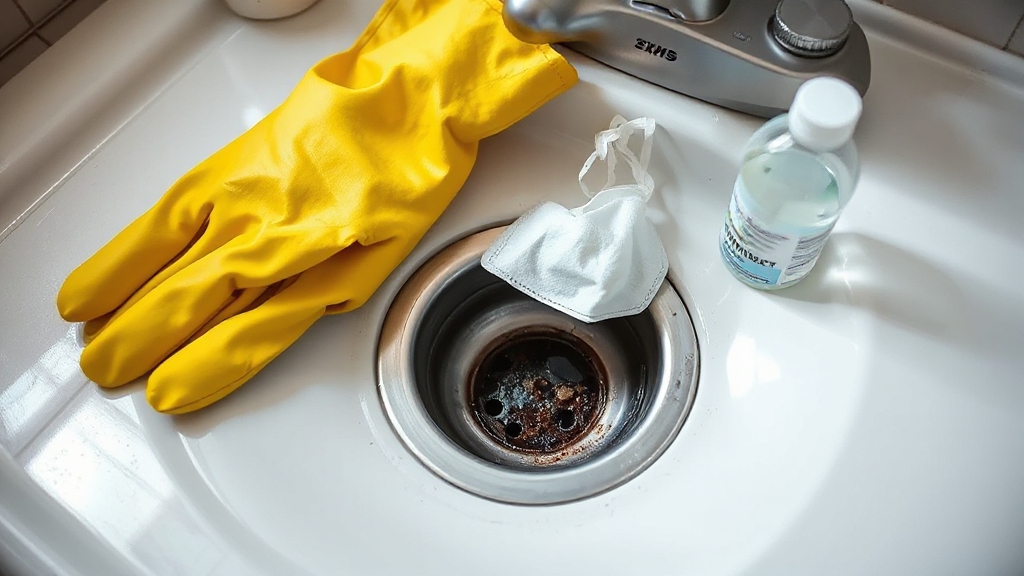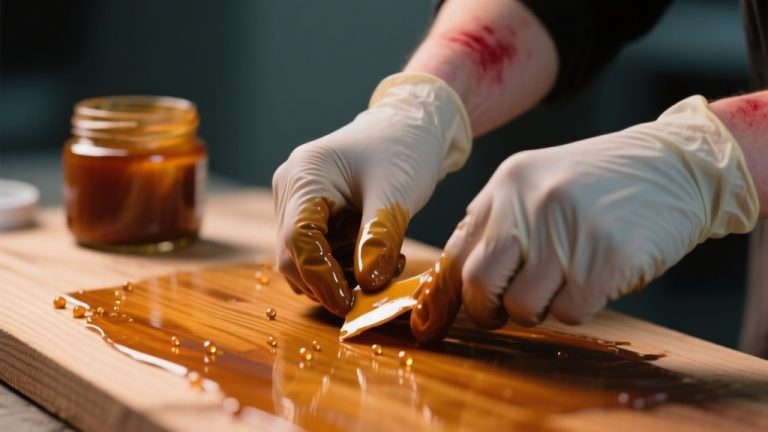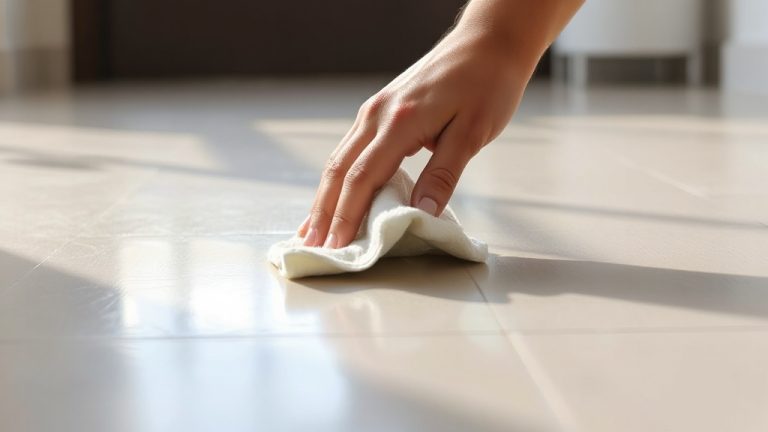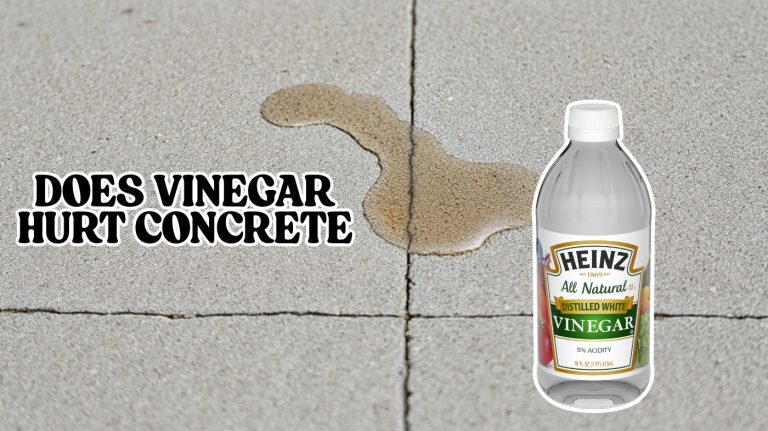Can Ammonia Unclog Drains? Risks and Safer Alternatives
You can use ammonia to unclog drains, but it’s risky and often not the best choice. Ammonia’s corrosive nature can damage your pipes and pose health hazards from fumes, especially if mixed with bleach.
There are safer, eco-friendly alternatives like enzymatic cleaners or mechanical tools that protect your plumbing and health.
If you want to avoid costly repairs and environmental harm, understanding proper methods and safer options is essential—you’ll find useful insights ahead.
Key Takeaways
- Ammonia can help break down organic blockages in drains but is corrosive to metal pipes like copper and brass.
- Using ammonia repeatedly accelerates pipe deterioration and may cause leaks over time.
- Mixing ammonia with bleach creates toxic gases, posing serious health risks.
- Safer alternatives like enzymatic cleaners, vinegar with baking soda, or mechanical tools are recommended.
- Proper ventilation and protective gear are essential when using ammonia to minimize health hazards.
Risks Associated With Using Ammonia for Drain Cleaning
While ammonia might seem like a quick fix for clogged drains, you should be aware of several significant risks before using it.
Ammonia’s corrosive nature can damage copper or brass pipes, leading to leaks and costly repairs over time. Repeated use accelerates pipe deterioration, compromising your plumbing system’s integrity. This can often result in pipe bursts, causing emergency plumbing situations.
Mixing ammonia with other chemicals, especially bleach, can trigger dangerous reactions that produce toxic gases. Exposure to ammonia fumes poses serious health hazards, including respiratory distress and skin or eye irritation.
Never mix ammonia with bleach—dangerous toxic gases form, risking serious respiratory and skin injuries.
Additionally, ammonia can disrupt septic system balance and harm local ecosystems if it enters waterways. Frequent use may lead to inefficient clog removal, resulting in repeated applications and further pipe damage.
Safe Alternatives to Ammonia for Unclogging Drains
Because ammonia poses significant risks to your plumbing and health, you should consider safer alternatives for unclogging drains.
Enzymatic drain cleaners use enzymes to digest organic matter gently, protecting pipes while effectively clearing clogs over time.
Vinegar and baking soda create a mild chemical reaction to break down minor blockages; use cautiously on fragile pipes due to foaming pressure. Salt combined with hot water dissolves grease and flushes debris safely and frequently.
Mechanical methods like plungers and drain snakes physically remove obstructions without chemicals, making them suitable for all pipe types.
Additionally, commercial green cleaning products provide eco-friendly, non-toxic drain maintenance options.
Many users have reported respiratory reactions after exposure to harsh cleaning chemicals, highlighting the importance of choosing gentle alternatives.
Proper Procedures for Using Ammonia in Drain Maintenance
Before applying ammonia for drain maintenance, you need to prepare properly by gathering all necessary materials like ammonia, boiling and lukewarm water, a plunger, and petroleum jelly.
Start by evaluating the clog’s type and severity, ensuring the area is well-ventilated and wearing protective gloves. Remove any pop-up stoppers or drain guards for better access.
Use a diluted ammonia solution mixed with boiling water, pouring it slowly into the drain. Let it sit for 30 minutes before rinsing with lukewarm water. If the clog persists, it may be necessary to use alternative gadgets such as a Drain snake to break up tougher blockages.
To enhance effectiveness, apply petroleum jelly to the plunger rim for a tight seal and plunge vigorously.
Key steps include:
- Proper dilution and mixing of ammonia
- Safety gear and ventilation
- Slow application and sufficient dwell time
- Plunger preparation with petroleum jelly for seal integrity
Health and Environmental Concerns Linked to Ammonia Use
If you choose to use ammonia for unclogging drains, you must understand its health and environmental risks to handle it safely.
Ammonia can irritate your respiratory tract, skin, and eyes. Inhaling fumes or mixing ammonia with bleach creates toxic chloramine gas. Environmentally, ammonia corrodes pipes, disrupts septic systems, and pollutes water and soil.
Proper ventilation and secure storage are crucial to minimize risks. Chemical drain cleaners like ammonia can also pollute water supplies despite wastewater treatment efforts.
| Health Risks | Environmental Concerns |
|---|---|
| Respiratory irritation | Pipe corrosion |
| Skin and eye burns | Water and soil pollution |
| Toxic gas formation | Septic system disruption |
| Chemical burns | Air quality degradation |
Use ammonia cautiously, avoid mixing with other chemicals, and guarantee appropriate disposal to protect health and environment.
Frequently Asked Questions
Can Ammonia Remove Grease Buildup in Kitchen Drains?
Yes, you can use ammonia to remove grease buildup in kitchen drains because it breaks down fatty acids effectively.
When mixed with boiling water and poured slowly, it dissolves grease and soap residues. However, you should avoid frequent use due to its corrosive nature and toxic fumes.
Always guarantee good ventilation and rinse thoroughly with cold water afterward to minimize pipe damage and health risks.
How Long Does Ammonia Take to Clear a Clogged Drain?
You should leave ammonia in the clogged drain for at least 30 minutes to allow it to break down organic blockages effectively.
The exact time depends on the clog’s severity, so you might need to repeat the process if it persists. Remember, ammonia isn’t instantaneous and often requires mechanical help like plunging to clear stubborn clogs.
Always use protective gear and ventilate the area to avoid health risks while working.
Is Ammonia Effective on Hair Clogs in Bathroom Sinks?
You shouldn’t rely on ammonia to clear hair clogs in bathroom sinks. It lacks the caustic properties needed to dissolve hair or grease effectively.
Instead, ammonia poses risks like toxic fumes and pipe corrosion, especially with copper or galvanized steel pipes.
For hair clogs, use mechanical tools like a drain snake or safer alternatives such as baking soda and vinegar. These methods are more effective and safer for your plumbing and health.
Can Ammonia Be Used in Septic Systems Safely?
You want to protect your septic system, maintain bacterial balance, and comply with regulations.
Ammonia itself won’t harm the beneficial bacteria in your septic tank, but you must avoid mixing it with bleach or other chemicals. Always guarantee proper ventilation to prevent toxic buildup.
Regular monitoring and controlled use keep ammonia levels safe, minimizing environmental impact and preserving system efficiency. Handle ammonia cautiously to maintain your septic system’s health.
What Concentration of Ammonia Is Best for Drain Cleaning?
You should use a diluted ammonia solution for drain cleaning, typically at a concentration of about 1.5M or a 1:10 to 1:20 dilution of a 25% household ammonia solution.
This guarantees safety and reduces damage risks to pipes and septic systems. Always work in a well-ventilated area and wear protective gloves and goggles to avoid exposure to harmful fumes and skin irritation.
Choose Safer Drain Solutions to Protect Your Home and Health
Using ammonia to unclog drains might seem like a quick fix, but it’s a double-edged sword. While it can clear minor blockages, the risks to your health and plumbing often outweigh the benefits.
Instead, opt for safer, purpose-made alternatives that protect both your pipes and the environment. Remember, treating your drains with care now prevents bigger headaches down the road—don’t let a simple clog turn into a costly disaster.







